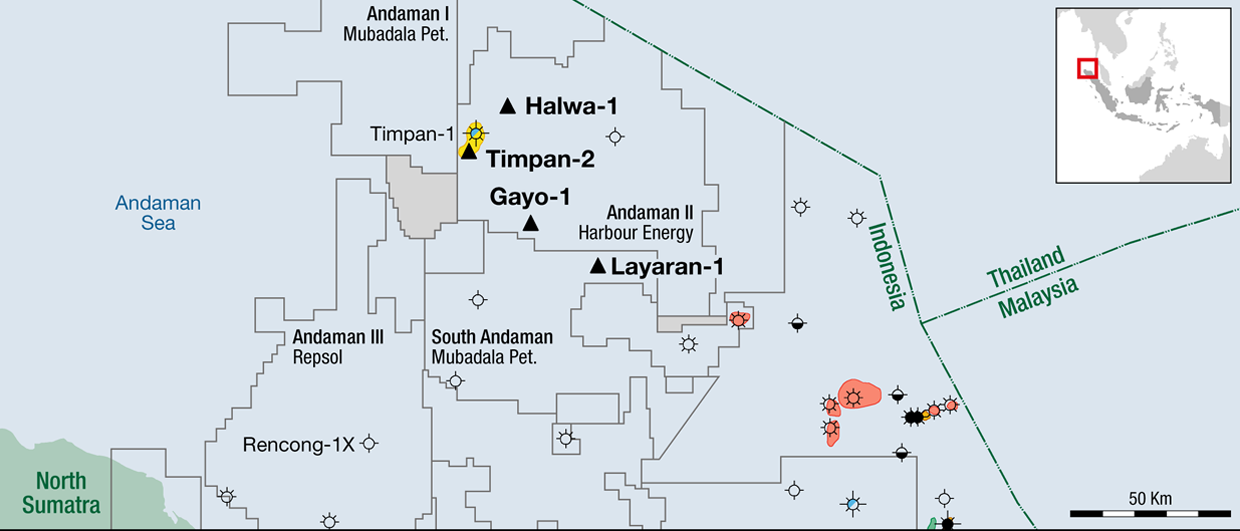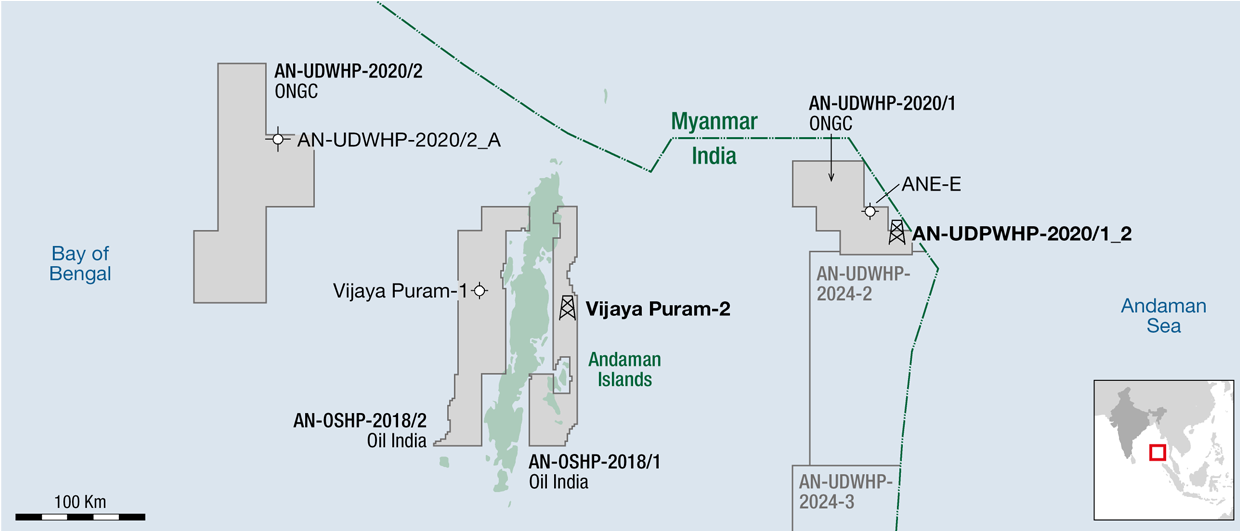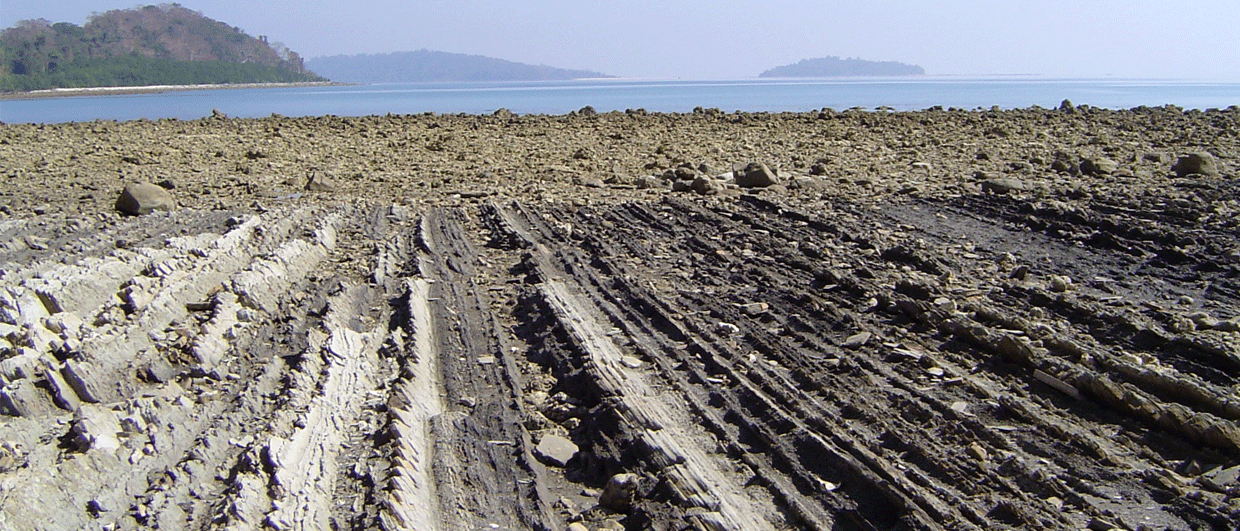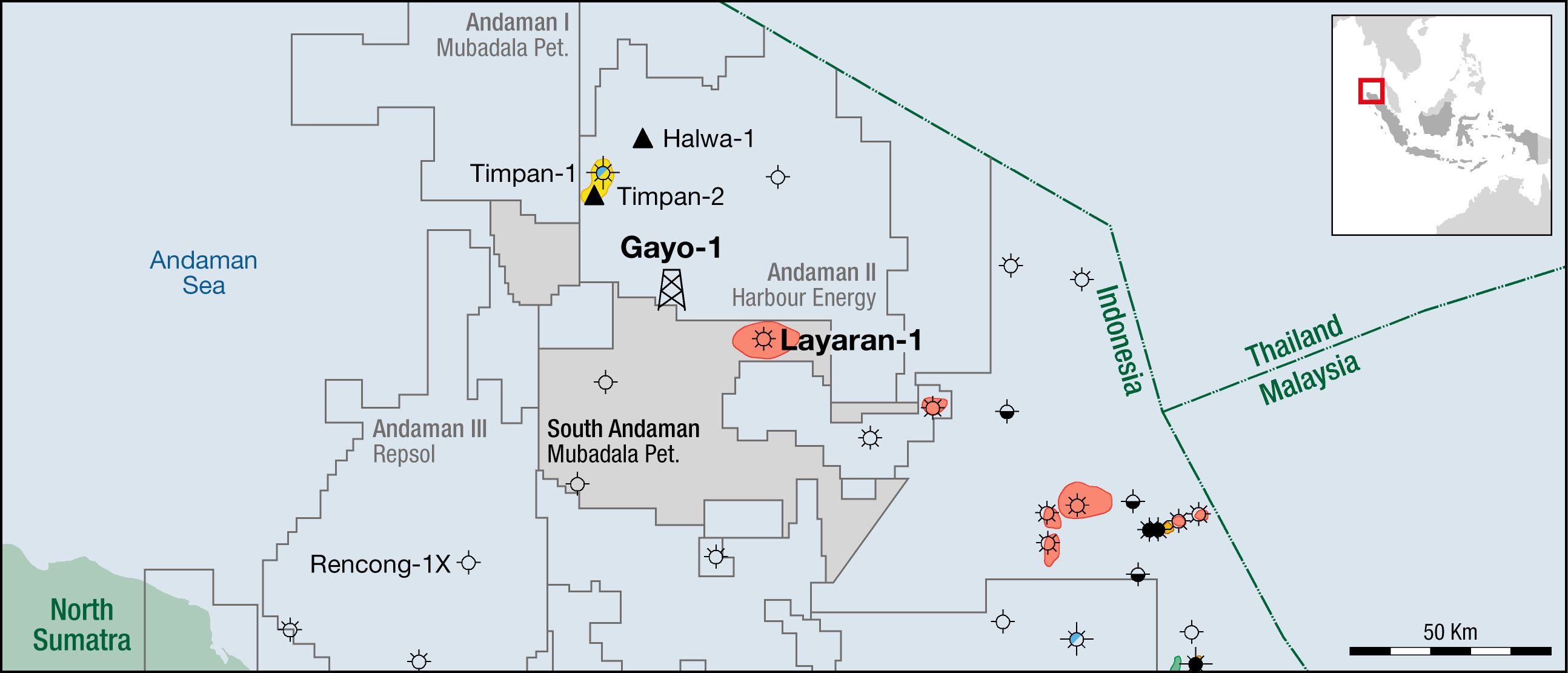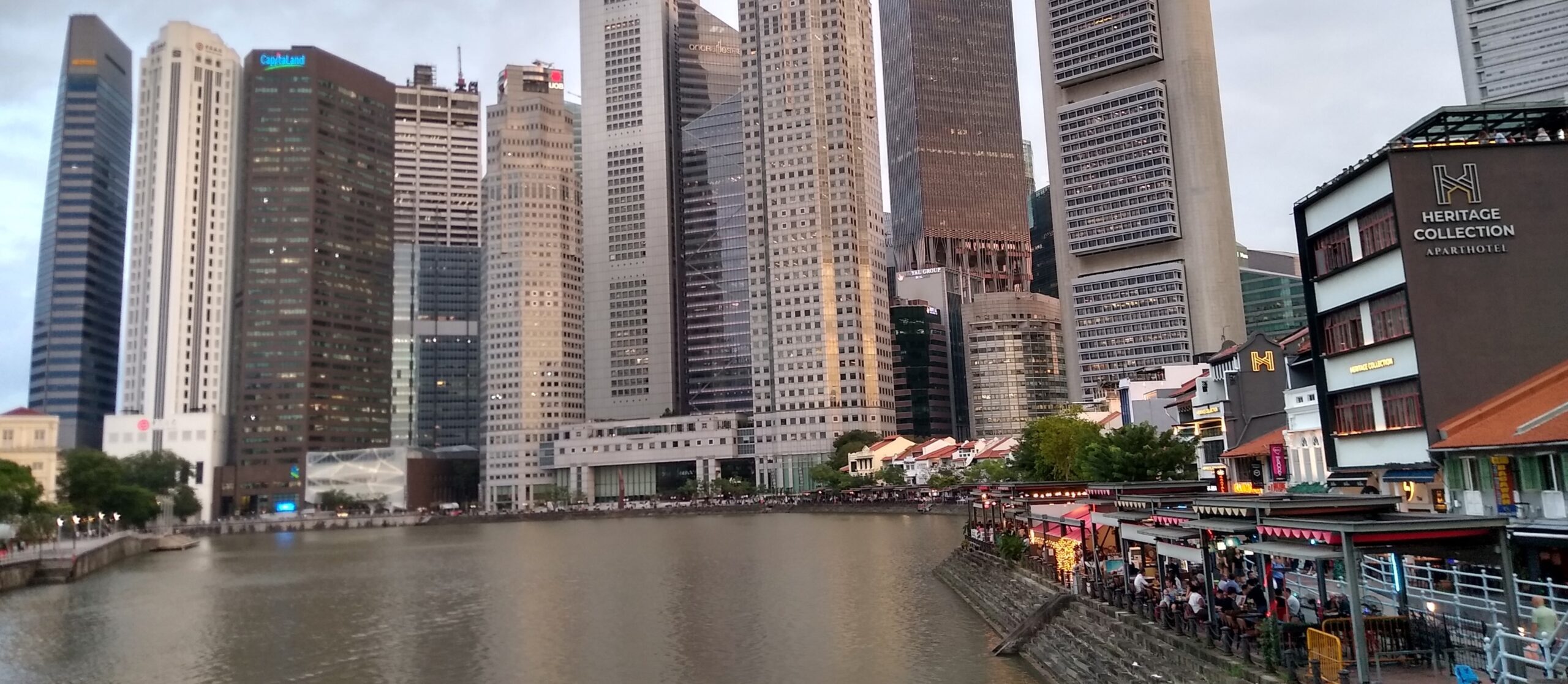Gas resources play a crucial role in future energy planning, as a transitional fuel and also a path to energy exports, vital to a burgeoning economy. While core areas such as Makassar and Mahakam continue to contribute new gas reserves, the industry has high hopes for a new frontier gas play to the north of Sumatra, in the Andaman Sea.
Mubadala, bp, Harbour Energy and Repsol have built a material position in the Andaman Sea, offshore Aceh, with interests in Andaman I, II & III, and South Andaman. In Andaman II specifically, Harbour, bp and Mubadala have successfully drilled a new multi-TCF gas play with success at Timpan 1 in 2022.
Andaman II was awarded to Premier (now Harbour) in 2018, on the back of the 2017 Bid Round. Harbour then joined South Andaman and Andaman I in 2020 along with bp. Mubadala operates Andaman I and South Andaman. Repsol operates Andaman III, on the western flank of the basin.
The Andaman South and II groups secured the return of the West Capella drillship to drill the Andaman acreage in 2023 and 2024. This should commence later in 2023, with the drilling of the amplitude-supported Layaran prospect on Mubadala’s operated Andaman South licence, followed by the Halwa prospect to the northeast of Timpan and the Gayo prospect to the southeast of Timpan on Andaman II. In the meantime, the group plans to appraise Timpan with Timpan 2 in Q1 2024. The mid-case resource for Timpan is 1 TCF, with a 6-12 TCF target volume across the entire play.
Not only for the domestic market
Success in finding these volumes will lead to a significant development and export scenario. There is of course a strong gas market in Indonesia, but the operators are also considering pipeline offtake to Thailand, Malaysia and Singapore. LNG is also a strong potential market, with offtake being considered at the nearby Arun LNG terminal, which is currently in re-gas/import mode according to reports. First gas could be realised by 2030, depending on the results of this drilling campaign.
Timpan
The Timpan 1 exploration well was drilled in July 2022 on the Andaman II licence offshore North Sumatra, Indonesia. The partners in the licence are Premier Oil Andaman Limited, (Harbour Energy Company, 40%), bp (30%) and Mubadala (30%). Water depths are around 1,300 m, with depth to target around 4,200 m in this play. The “play opener” well encountered a 119 m gas column in a high net-to-gross, fine-grained sandstone reservoir with associated permeability of 1-10 mD. A full data acquisition programme was carried out including wireline logging, 73 m of core recovered and a drill stem test. Harbour announced that during testing the well flowed at 27 mmscfgd and 1,884 bpd of associated 58 deg API condensate through a 56/64” choke. Timpan is understood to be a four-way dip closure structure in Upper Oligocene sands in the North Sumatra Basin. 3D was shot here and over adjacent prospects by PGS in Q3 2022.
“With a major multi-TCF gas trend revealed at Timpan, and several exploration and appraisal wells committed on these blocks, the South Andaman region of the North Sumatra basin will be keenly watched, as the long tradition of gas development in Indonesia receives yet another lease of life.”

Turbidites and carbonates
The “Timpan trend” is within the North Sumatra Basin, south of the Mergui Basin, a deeper basin with potential gas source rocks. There are numerous structural depocentres across the area with mainly Oligo-Miocene age deposits. Within these basin-lows are often slope and turbidite clastics, associated with a gas trend that is becoming more understood, and often supported by strong amplitudes and DHIs. Intra-basinal highs are associated with carbonate reefs and build-ups, for example the Arun Limestone. These limestones are more challenging targets but well known to Indonesian explorers. An attempt to extend the carbonate build-up play failed in the southwest of the basin, where Repsol’s and Petronas’ well Rencong 1X presumably came up dry in July 2022 even though the operator did not confirm this.
Keeping an eye
The industry will be closely watching the next exploration wells to be drilled on this trend.
Gayo-1 and Halwa-1 on Andaman II are similar four-way dip closures with amplitude support. Harbour do report that Gayo and Halwa may have shallower reservoir targets (Miocene) than those encountered at Timpan (Late Oligocene), which may in turn deliver better reservoir properties. Halwa has a large amplitude response similar to Timpan, along with a pronounced gas chimney. Timpan Utara is a similar feature to Timpan and may well be in the multi-well appraisal programme planned in early 2024. Further south in the Mubadala-operated South Andaman block, Layaran 1 is planned for October 2023 on the amplitude-supported Layaran prospect, between Timpan and the smaller JAU discovery on the Krueng Mane Block by Eni. Lasmo tested this play in 2000 with the Bungong Jeumpa-1, with no discovery reported.
Along with the wildcat drilling, a Timpan appraisal is planned for early 2024. Timpan-2 will be drilled southwest of the Timpan-1 discovery.
With a major multi-TCF gas trend revealed at Timpan, and several exploration and appraisal wells committed on these blocks, the South Andaman region of the North Sumatra basin will be keenly watched, as the long tradition of gas development in Indonesia receives yet another lease of life.

